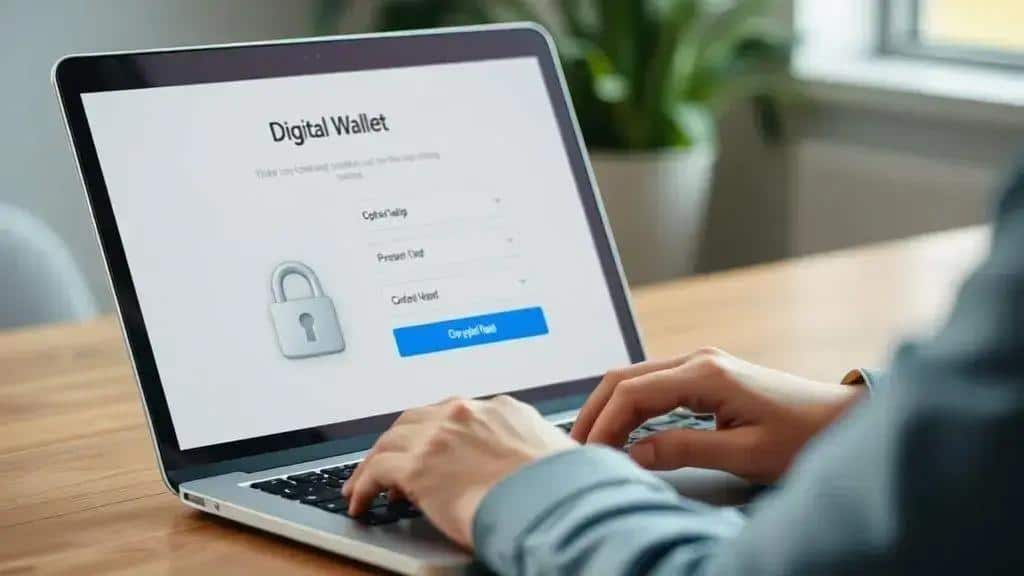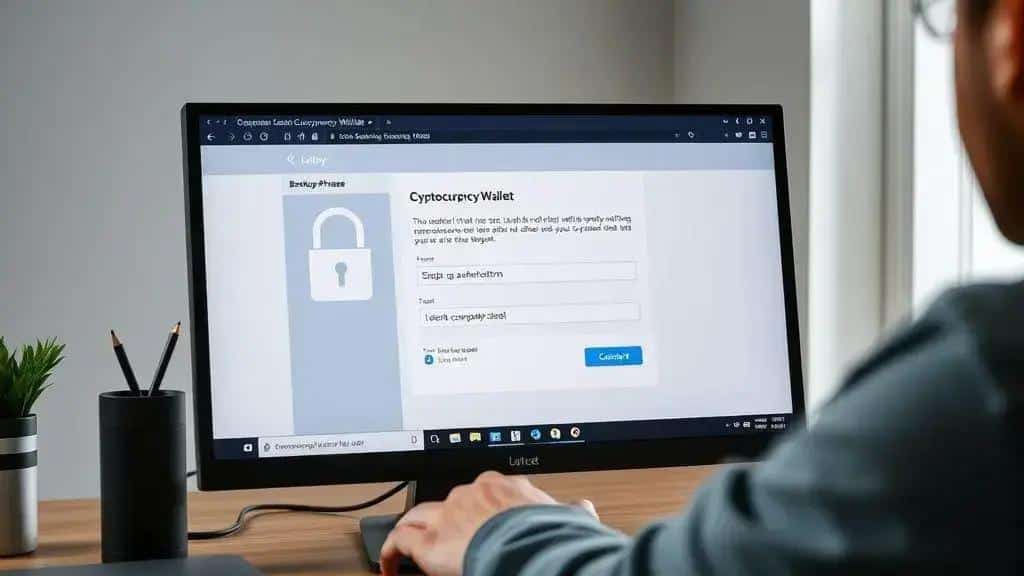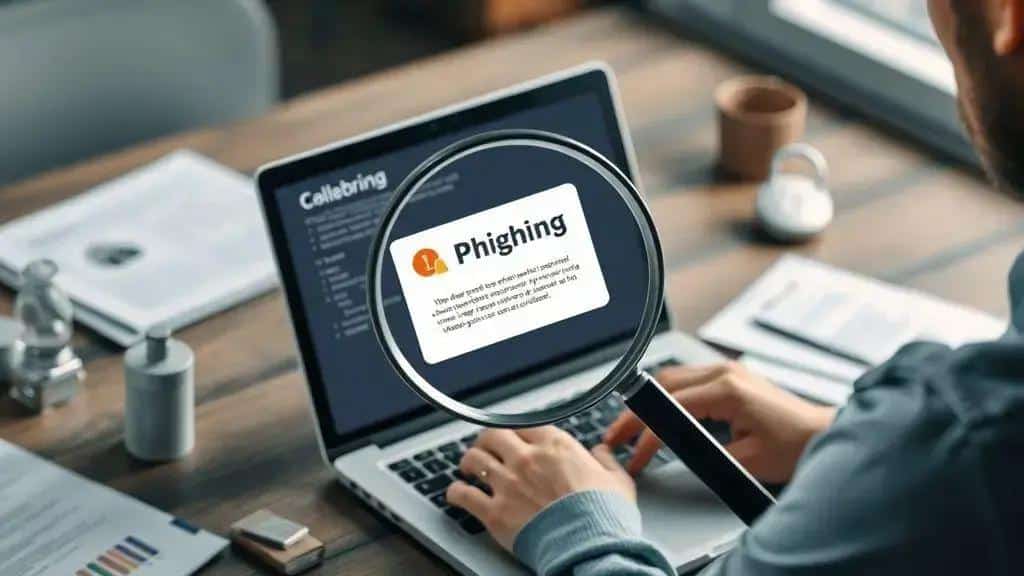Best practices for securing crypto wallets

To secure crypto wallets effectively, utilize strong passwords, enable two-factor authentication, recognize phishing scams, and consider using cold wallets for long-term storage of your cryptocurrency assets.
Best practices for securing crypto wallets are crucial for protecting your digital assets. With cyber threats on the rise, it’s essential to implement robust security measures. Let’s dive into strategies that can help you safeguard your cryptocurrencies.
Understanding different types of crypto wallets
Understanding the different types of crypto wallets is essential for anyone looking to manage their digital assets securely. With various options available, it’s important to choose the right one to protect your investments.
Types of Crypto Wallets
There are mainly three types of crypto wallets: hot wallets, cold wallets, and hardware wallets.
- Hot wallets: These wallets are connected to the internet. They are user-friendly and convenient for everyday transactions.
- Cold wallets: Also known as offline wallets, these are not connected to the internet. This makes them more secure against online threats.
- Hardware wallets: A type of cold wallet that stores your private keys on a physical device. They offer a high level of security.
Choosing the right type depends on your needs. If you’re doing daily trading, a hot wallet may be suitable. However, if you’re holding larger amounts of cryptocurrency for the long term, consider using a cold wallet or a hardware wallet.
Key Features to Consider
When selecting a wallet, think about the features it offers. Here are some important aspects:
- Security: Look for wallets with strong encryption and backup capabilities.
- User Interface: A wallet should be easy to navigate, especially for beginners.
- Control Over Private Keys: Ensure you have full control of your private keys, which adds a layer of security.
Understanding these features can help you make informed decisions when managing your assets. Always prioritize your security and choose a wallet that aligns with your usage patterns.
Setting up a secure wallet

Setting up a secure wallet is a crucial step in protecting your cryptocurrency assets. If done correctly, it can significantly reduce risks associated with hacks and loss. Let’s explore the steps to ensure your wallet is set up securely.
Choosing the Right Wallet
Start by selecting the right type of wallet that fits your needs. The choice between a hot or cold wallet hinges on how often you need access to your funds. Hot wallets allow for quick transactions, while cold wallets provide more security.
Downloading and Installing
When you decide on a software wallet, download it from the official website to avoid phishing scams. After installation, you’ll be prompted to create a new wallet. Make sure to choose a strong password that includes a mix of letters, numbers, and symbols.
Backing Up Your Wallet
Once your wallet is set up, it’s crucial to back it up. This process generally involves generating a recovery phrase or seed phrase that can restore your wallet if you lose access. Write this phrase down and store it in a safe place, away from your digital devices.
Enabling Two-Factor Authentication
For additional security, enable two-factor authentication (2FA) within your wallet settings. This adds an extra layer of protection by requiring a second form of verification when accessing your wallet. This could be a code sent to your phone or an app like Google Authenticator.
After these steps, always stay cautious. Regularly update your wallet software to protect against vulnerabilities. Be mindful of potential scams aiming to steal your credentials. Trust only reputable sources and never share your private keys with anyone.
By following these steps, you can significantly enhance the security of your cryptocurrency wallet and safeguard your digital assets.
Utilizing two-factor authentication
Utilizing two-factor authentication (2FA) is a powerful way to increase the security of your crypto wallet. It adds an additional layer of protection beyond just your password. Here’s how it works: when you log in, after entering your password, you will also need to provide a second form of verification.
How Two-Factor Authentication Works
This second factor could be a code sent to your mobile device or generated by an authentication app. The idea is that even if someone steals your password, they still won’t be able to access your wallet without that second piece of information.
Setting Up Two-Factor Authentication
To set up 2FA, first log into your wallet account and locate the security settings. Here are the common steps:
- Choose an authentication method: You can select SMS codes or an authenticator app like Google Authenticator.
- Link your mobile device: If you choose SMS, enter your phone number and verify it.
- Save your backup codes: Most wallets provide backup codes that you should save securely. These can be used if you lose access to your 2FA method.
Once set up, every time you want to access your wallet, you will need to input the code alongside your password. Remember, 2FA is not only about preventing unauthorized access; it also helps you stay alert to potential security threats.
Benefits of Using Two-Factor Authentication
Implementing 2FA in your crypto wallet comes with several benefits:
- Enhanced Security: It significantly lowers the risk of unauthorized access.
- Peace of Mind: Knowing that you have an extra layer of security makes you feel safer about your investments.
- Quick Recovery Options: If you lose your password, having 2FA can help you recover access more securely.
Always remember to keep your 2FA methods updated and be wary of phishing attempts. With 2FA in place, you can enjoy greater confidence in the safety of your cryptocurrency holdings.
Recognizing phishing scams and threats

Recognizing phishing scams and other threats is vital for securing your crypto wallet. Cybercriminals often use deceptive tactics to steal your sensitive information, including passwords and private keys. Understanding how these scams work can help you avoid falling victim.
Common Phishing Techniques
Phishing attacks typically involve misleading emails, messages, or websites that appear legitimate. Here are some common techniques used by scammers:
- Email Phishing: Scammers send emails that look like they’re from your wallet provider. These emails often contain links to fake websites.
- SMS Phishing: Similar to email phishing, but done via text messages. A message may prompt you to click a link or share personal details.
- Clone Websites: Attackers create fake websites that closely resemble real ones. They trick users into entering their credentials.
Be cautious of any communication asking for your confidential information, especially if it asks you to act quickly. Always verify the sender’s address and look for signs of legitimacy.
Recognizing Red Flags
There are several signs that can help you identify phishing attempts. Look out for these red flags:
- Poor Grammar: Messages with spelling or grammatical errors can indicate a scam.
- Urgency: If a message pressures you to act quickly, it’s likely a scam.
- Unusual Links: Hover over links to see where they lead. If the URL looks strange or does not match the official site, do not click it.
Always take the time to scrutinize any communications regarding your crypto assets. If something seems off, trust your instincts. Double-check by directly contacting your wallet provider to confirm any requests.
Staying Informed and Safe
Keeping yourself informed about the latest scams is crucial in the rapidly changing digital landscape. Follow reliable sources and cybersecurity blogs to learn about new threats. Additionally, use a secure email provider that offers spam filtering and other protective measures.
By being vigilant and aware of how phishing scams operate, you can better protect your cryptocurrency investments and maintain control over your wallet.
FAQ – Frequently Asked Questions about Securing Crypto Wallets
What is the best way to secure my crypto wallet?
Using strong passwords and enabling two-factor authentication (2FA) are crucial steps in securing your crypto wallet.
How can I recognize a phishing attempt?
Look for poor grammar, urgency in requests, and suspicious links that don’t match the official website.
Is it safe to use hot wallets for storing cryptocurrency?
Hot wallets are convenient for daily transactions but are less secure than cold wallets for long-term storage.
What should I do if I suspect a phishing scam?
If you suspect a phishing scam, do not click on any links and report the email or message. Always verify by contacting the company directly.





